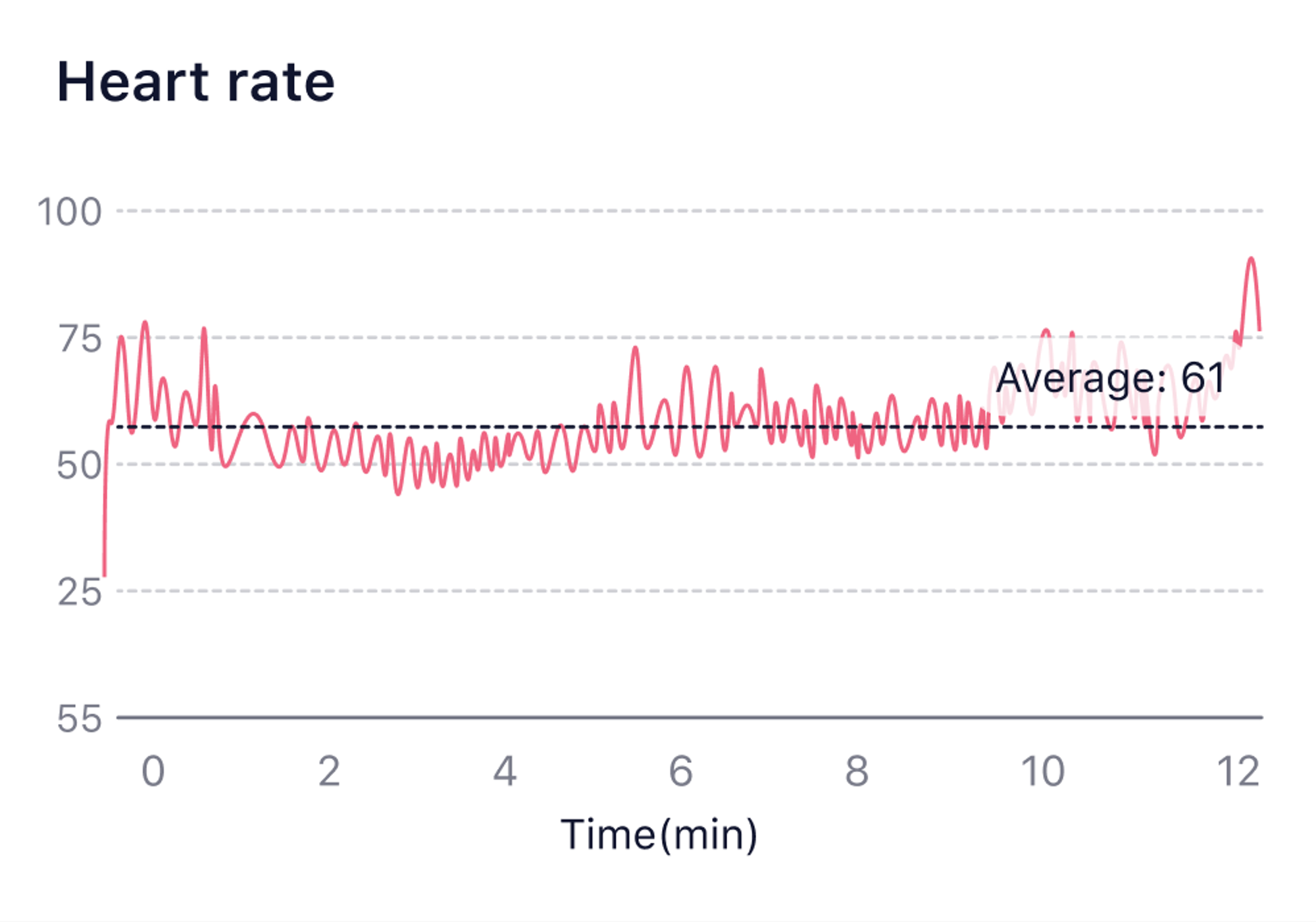What is Heart Rate
What is Heart Rate?
Heart Rate (HR), also known as pulse, is the number of times a person's heartbeats per minute. [1]
A normal person's resting heart rate is typically 50-90 BPM. [2]
In some real-life scenarios, the heart rate is calculated over a much shorter period of time in order to obtain real-time heart rate changes. [3]
PPG (photoplethysmography) sensors on the Flowtime headband use light-based technology to acquire the heart rate, which is accurate when they have good contact with the skin.
How to understand Heart Rate Graph?
Heart rate is closely related to physical state. During meditation, heart rate changes may be related to meditation methods, and heart rate may increase when entering certain meditation states. In general, the change of heart rate is disordered. Through long-term training, the heart rate can be seen in a certain periodic rhythm during meditation. At this time, the breathing and heartbeat reach a coordinated state.
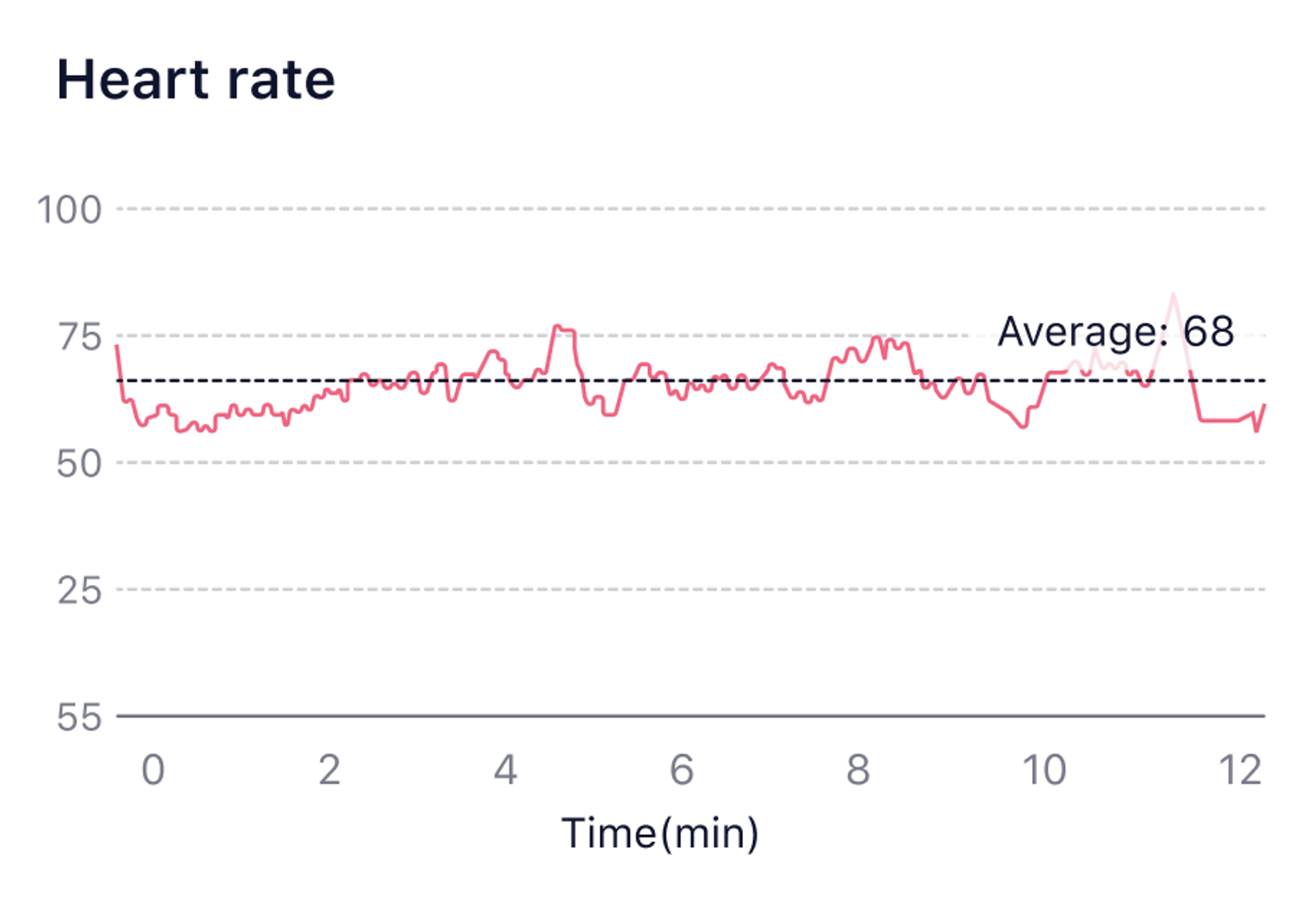
Typical meditation heart rate graph
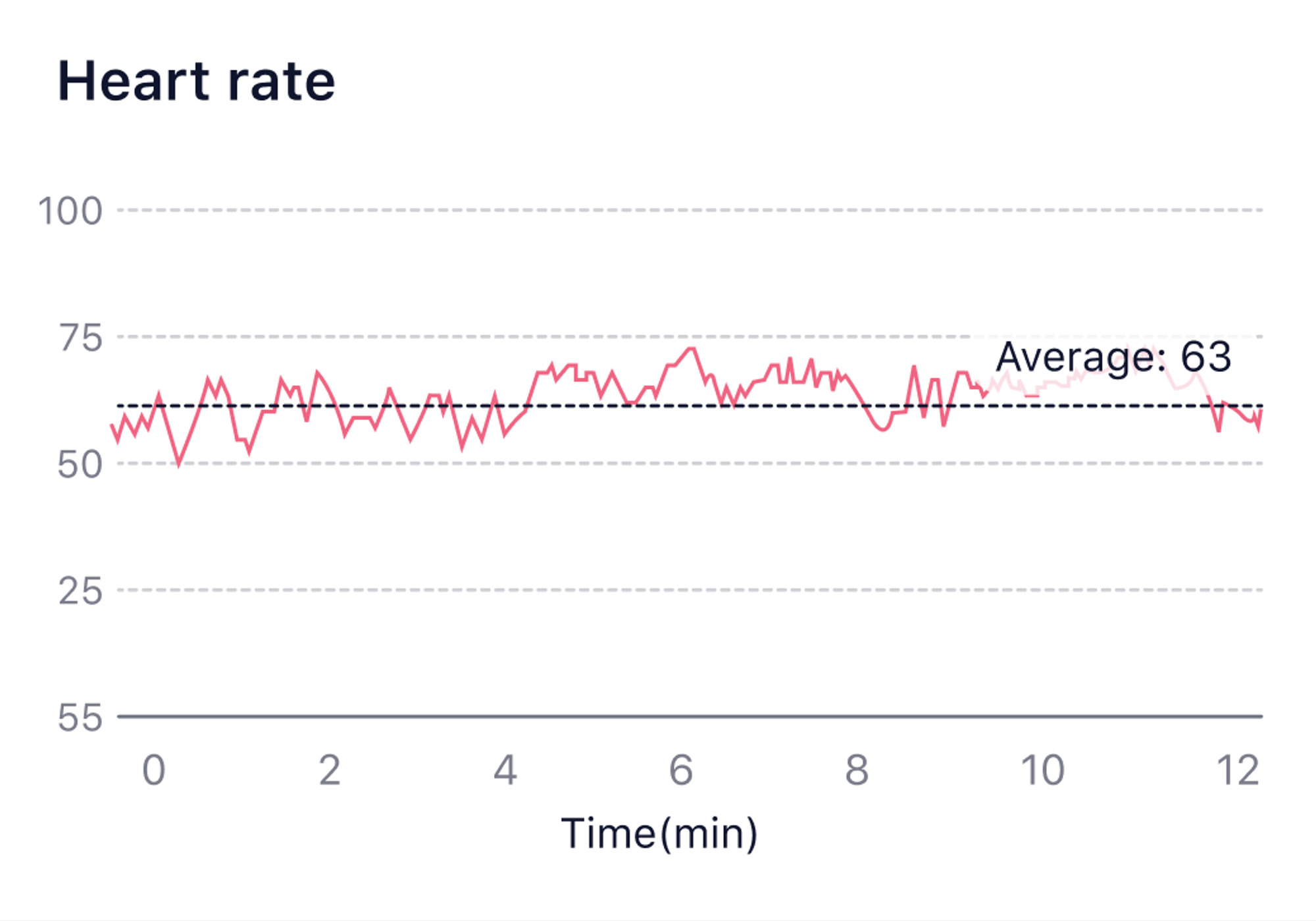
Heart Rate may change smoothly when you are meditating.
By practicing different techniques, heart rate may decrease and increase.
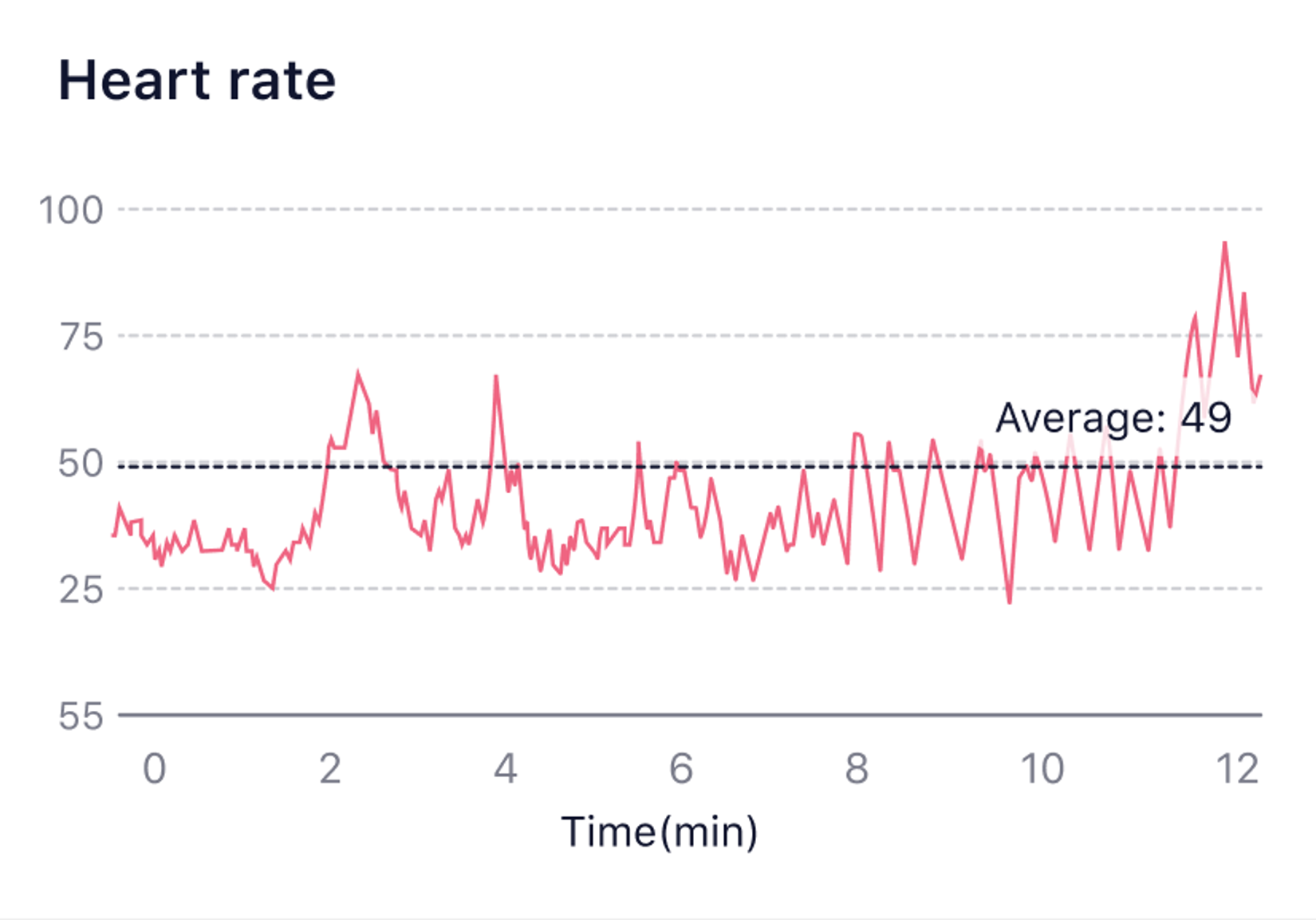
Example of periodic rhythm of heart rate as a result of regular breathing after 7 minutes.
By practicing different techniques, heart rate may decrease and increase.
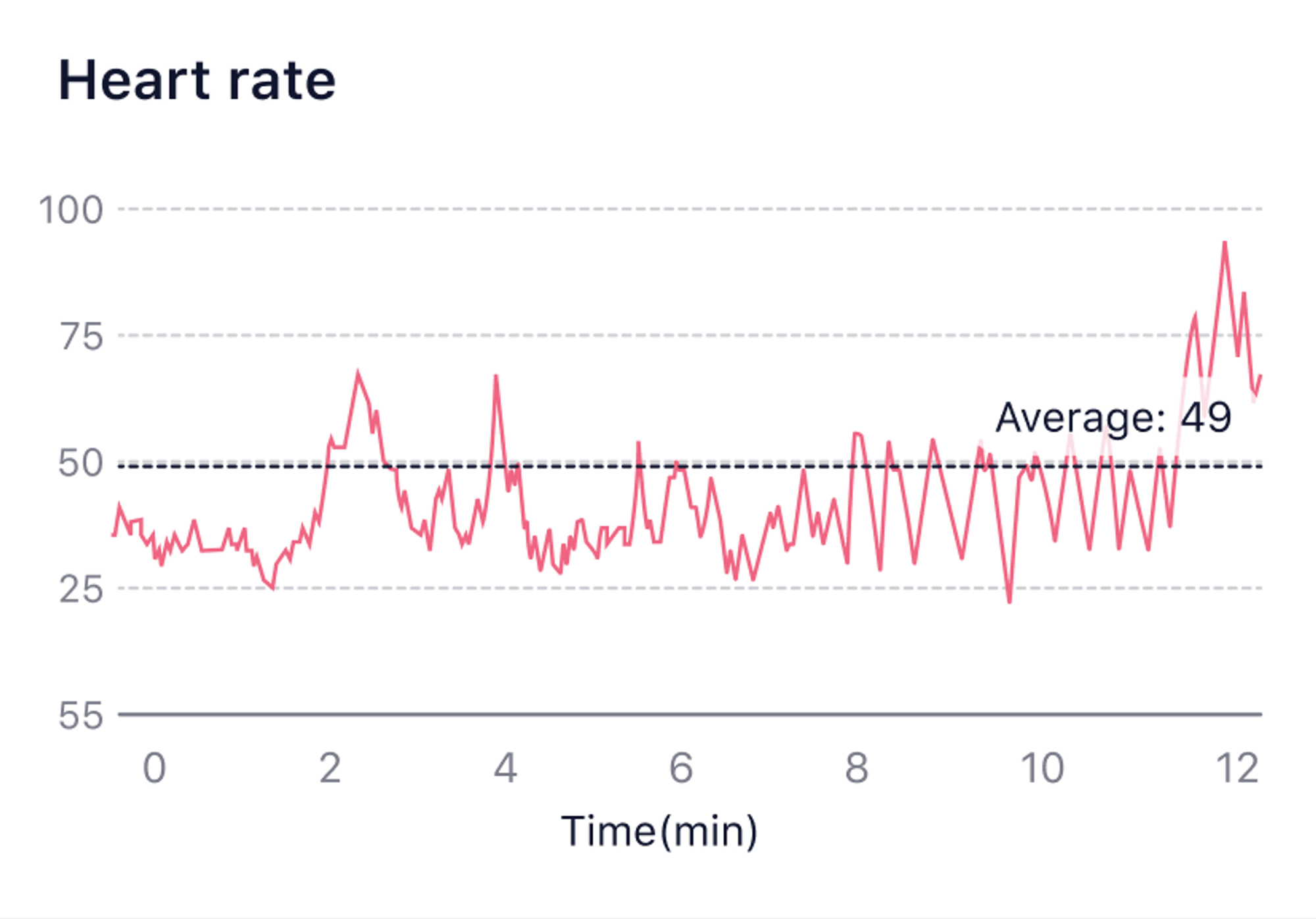
Example of periodic rhythm of heart rate as a result of regular breathing after 7 minutes.
References
1. Ananya Mandal. What is Heart Rate? News-medical.(2019-06-05). <https://www.news-medical.net/health/What-is-Heart-Rate.aspx>
2. Nanchen, David. (2018). Resting heart rate: What is normal?. Heart. 104. heartjnl-2017. 10.1136/heartjnl-2017-312731.
3. Block, Frank. (1994). What is heart rate, anyway?. Journal of clinical monitoring. 10. 366-70. 10.1007/BF01618415.

